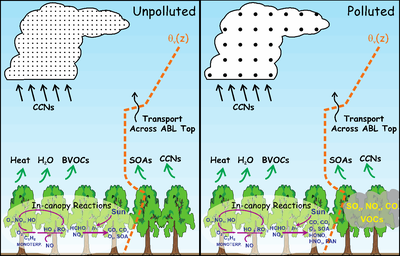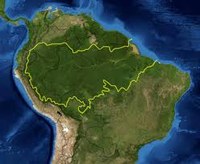New DOE project to study aerosols and tropical rainfall
The Amazonia region is unique in the world as it experiences the deepest atmospheric convection with important teleconnections to other regions and parts of the Earth’s climate. It also represents the largest emissions of hydrocarbon compounds that exhibit minor seasonal patterns in response to the year-round growing season and high temperatures. Chamecki is leading a team of scientists from the United States (from Duke University, Montana State University, and State University of New York at Albany) and Brazil (from several universities and research centers) to investigate the life cycle of secondary aerosols in pristine and polluted environments. Investigations span biological and atmospheric conditions influencing hydrocarbon emissions and chemical reactions of aerosol precursors, formation and transport of aerosols from near the ground surface to the cloud layer. Influences of aerosols on cloud formation and rainfall amounts will be investigated in areas dominated by pristine forested landscapes and regions influenced by urban environments, downwind of the City of Manaus, Amazonas, Brazil. Chamecki and his collaborators will use aerosol spectrometers, cloud condensation nuclei counters (CCNs), and meteorological instruments deployed on tethered balloons and flux towers to generate unique data sets to verify whether the aerosols formed from the reactions of hydrocarbon compounds emitted by the rainforest meaningfully influence rainfall (see Figure below). Numerical model simulation studies will also be carried out over the course of three years. Field studies will be done during February – March and September – October 2014. The team expects to integrate the results into the Brazilian Earth System Model and several US Earth System Models.

This figure shows physical and chemical pathways originated from the canopy and transported all the way up to the cloud base, illustrating the chemical transformations of hydrocarbons to generate secondary organic aerosols (SOA). The proposed project seeks to understand how such processes can influence cloud formation and rainfall processes. Due to the chemical attributes of aerosols, clouds over rural environments develop smaller cloud droplets undergoing inefficient coalescence and collision, which could suppress rainfall, whereas clouds formed over regions under urban influences develop larger droplets undergoing efficient coalescence and collision, which could enhance rainfall.

